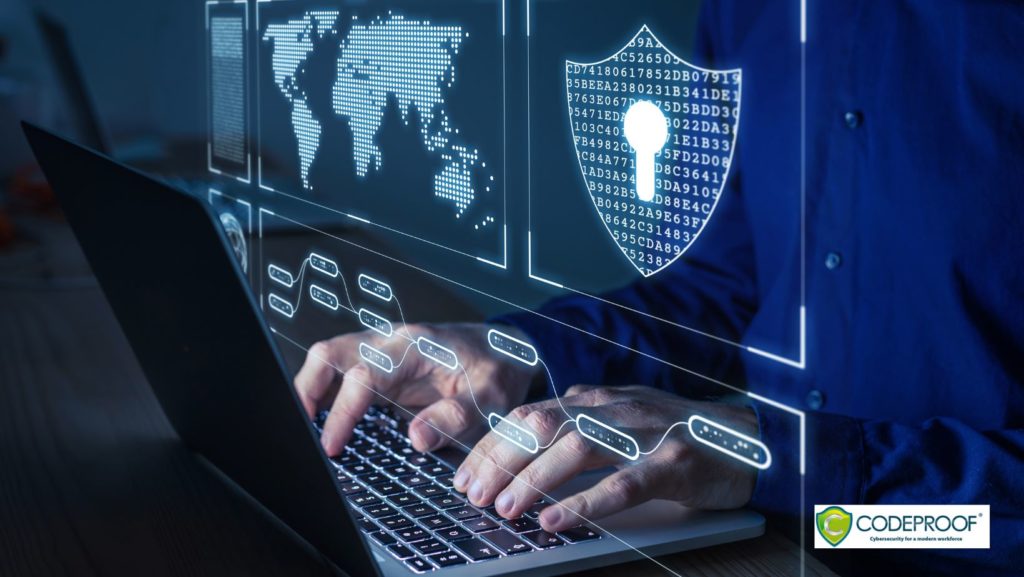“Cyber-Security is much more than a matter of it”
This quote by Stephane Nappo explains the depth of cybersecurity and the amount of harm data breaches can cause to different sectors of the economy including the banking sectors. As customers, we entrust our banks and other financial institutions not only with our hard-earned money but our sensitive personal information. ln recent years cyber-attacks and data breaches have become more common than ever. With the advancement of technology at lightning speed it has become much easier than burglary. Criminals are constantly looking for vulnerabilities in financial institutions to access and misuse sensitive data. The robbers are taking advantage of technology revolution across the globe so should the banking sectors to protect our sensitive information including our bank account numbers, social security numbers, and credit card information.

From a banking perspective, cyber-attacks like phishing and malware attacks can have devastating consequences for financial institutions, including reputational damage, loss of revenue, legal and regulatory penalties. It has been rightly said that I quote “It takes 20 years to build a reputation and a few minutes of cyber-incident to ruin it.” To mitigate the risk of data breaches, financial institutions need to take proactive steps to implement robust security measures. This includes investing in cybersecurity infrastructure, such as firewalls and intrusion detection systems, and implementing strong access controls and password policies. The distributed Denial-of-Service (DoS) attacks, insider threats, third-party risks, and ransomware are among the many threats posed by data vulnerability of the banking sector. DoS attacks involve overwhelming a website or network with traffic to make it unavailable to legitimate users whereas Insider threats refer to risks posed by employees, contractors, or partners who have access to sensitive information or systems. Third-party risks are security threats posed by vendors, suppliers, and other external partners who have access to sensitive data or systems. Ransomware is a malware that encrypts files on a victim’s computer system, making them inaccessible until a ransom is paid. In conclusion, data breaches are a growing threat to the banking industry, and financial institutions must take proactive steps to protect themselves and their customers from cyber threats.

It should be a collaborative effort of government and private entities to raise awareness among employees and customers as a part of financial literacy and cybersecurity. This will help employees to identify potential threats and take proactive steps as per protocol. By having a preset defined guideline by financial institutions, employees will have clarity in decision making leading to a proactive yet effective approach to dealing with such threats.
Investing in cybersecurity infrastructure, and implementing strong access controls and password policies is the need of the hour. It’s no more a leverage but a necessity for their survival. Utilizing advanced MDM solutions such as Codeproof, can significantly reduce the risk of a data breach and protect themselves and their customers from harm. It detects and blocks DoS attacks by providing advanced threat detection and prevention mechanisms. It monitors employee activities on mobile devices and alerts administrators in case of suspicious activity, reducing the risks posed by insider threats and helps in enforcing strict security policies on third-party devices, ensuring that they meet minimum security standards before accessing sensitive information or systems. Thereby providing a one-stop solution for all your banking needs.
Overall, financial institutions face numerous cybersecurity-related problems that can have severe consequences for their operations and customers. However, by implementing robust security measures and utilizing advanced MDM solutions such as Codeproof, financial institutions can significantly reduce their risk of a data breach and protect themselves and their customers from irrevocable harm.
To protect, you need to know your enemy, to learn about the most critical cybersecurity trends check this article by Forbes.
Securing The Future: The Most Critical Cybersecurity Trends Of 2023
For more cybersecurity-related information and Codeproof’s services, visit our website.

